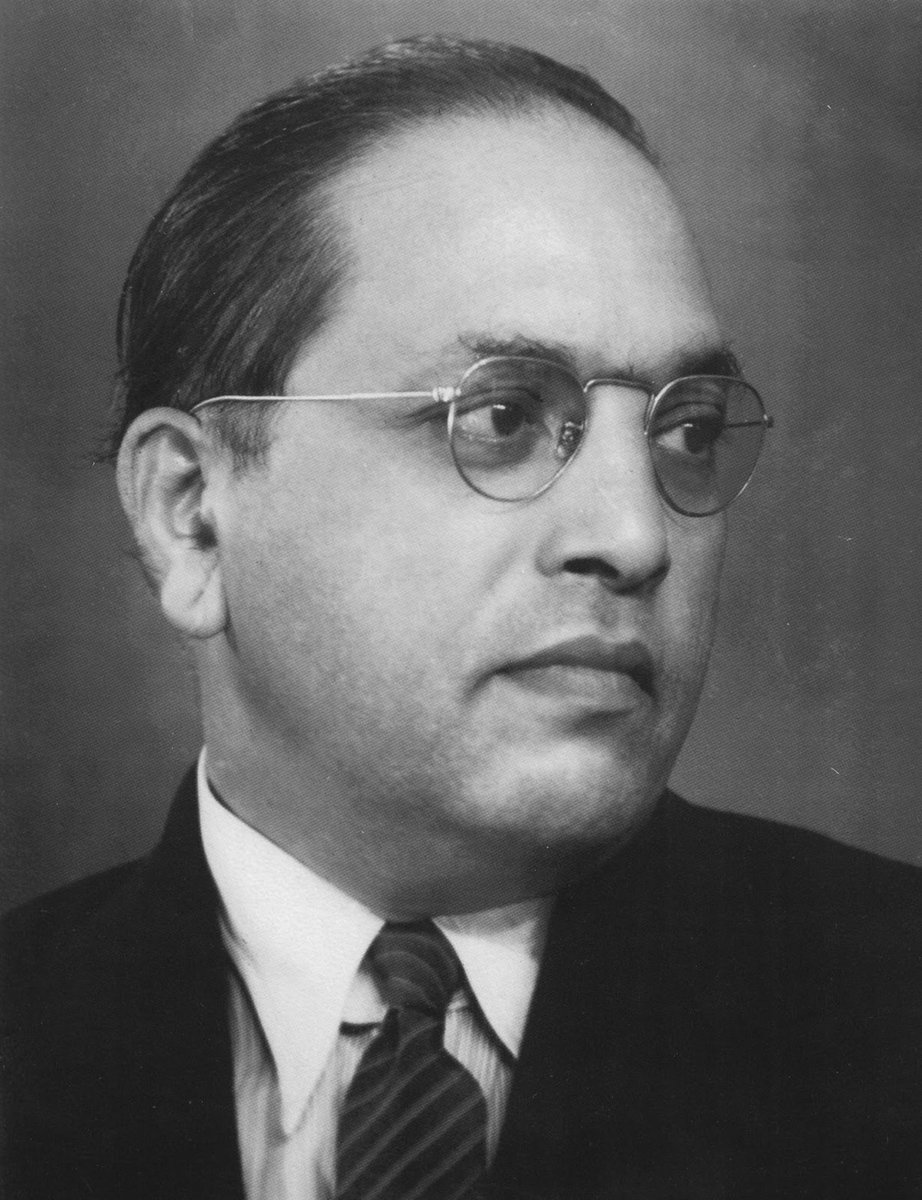
Public celebrations of #Navratri in #Maharashtra began in 1926 & are linked to reformers Prabodhankar Keshav Sitaram Thackeray, Dr #BabasahebAmbedkar & Rao Bahadur S.K. Bole. This was a form of counter-culture against #Ganeshutsav, which was then dominated by #Brahmins
#Mumbai


#Mumbai



Incidentally, #Ganeshutsav was popularised by #LokmanyaTilak in the backdrop of the Hindu-Muslim riots in 1893-94. It soon replaced #Muharram, which was then the most popular festival in the Bombay Presidency, with massive participation from Hindus
The #Ganeshutsav at #Dadar in #Mumbai, saw donations being collected from people across castes. However, the organising committee was dominated by Brahmins, who kept other groups away from it. The singers and religious orators were also Brahmins. In short, they ran the show.
Dr Ambedkar was invited by the organising committee of this Ganesh utsav to speak during the festival. However, this raised the hackles of Savarna Hindus, who felt that a Dalit’s presence would be "defiling."
Ambedkar was given death threats but was undeterred. As his biographer Changdeo Khairmode writes: “Saheb (Ambedkar) said, one has to die someday or the other. Then, why shouldn’t one die fighting?” Ambedkar went to the function with a loaded revolver in his coat pocket.
His bodyguard Balaram Mane also summoned some Mahar (a Dalit caste that converted to Buddhism with Ambedkar in 1956) wrestlers from akhadas in the city, who protected Ambedkar at the venue.
Though there were some unsuccessful attempts to disrupt his speech. There, Ambedkar rightly stressed that the Hindu community could never be strengthened unless it discarded its obscurantist notions.
In 1926, progressive & non-Brahmin youth sought permission for other castes and erstwhile ‘untouchables’ to worship during these celebrations at Dadar.
Ambedkar & his associates tried to negotiate with the committee to let Dalits worship and participate in the festival’s cultural events. However, the committee members refused. On Ganesh Chaturthi, a group led by Ambedkar, Rao Bahadur S.K. Bole & Prabodhankar Thackeray
pressed for this outside the venue near Tilak Bridge in Dadar. Prabodhankar threatened that if the ‘untouchables’ were not allowed to worship the deity by 3 pm that afternoon, he would smash the idol!
#Prabodhankar Keshav Sitaram Thackeray, the father of later-day #ShivSena supremo #BalThackeray was a feisty anti-caste activist & journalist.
#UddhavThackeray #RajThackeray #AadityaThackeray
#UddhavThackeray #RajThackeray #AadityaThackeray
Eventually, a middle ground was arrived at. It was decided that a Brahmin priest would consecrate the idol, after which Ambedkar’s associate Ganpat Mahadev Jadhav ‘Madkebua’ (a chowk in Parel is named after him) would hand over a bunch of flowers to him to be offered to the Lord
Many were rattled by this protest. Some priests decided to stay away from the worship at the last minute. To prevent a repeat of such incidents, the rattled organising committee announced that the Ganesh festival would not be celebrated in Dadar again.
This led to a whisper campaign being launched, blaming Prabodhankar for the turn of events. Prabodhankar writes that the Bahujan samaj wanted to be part of a festival that encompassed members of all castes & creeds
Hence, these social activists decided to launch the public celebrations of Navratri that were more inclusive. Prabodhankar writes in his autobiography that the Mother Goddess is the presiding deity of Maharashtra.
Navratri was celebrated across the state during the reign of Chhatrapati Shivaji Maharaj. It was during the Peshwa era that Ganesh worship took precedence. Lokmanya Tilak rejuvenated the Peshwa era tradition (1894).
Prabodhankar, Bole, and their associates started the Lokahitavadi Sangh, which hosted the first such public celebration of Navratri at Dadar through the Shri Shiv Bhawani Navratri Mahotsav in 1926.
The concept of a festival encompassing all Hindus, including the erstwhile ‘untouchables’, saw huge crowds, including people from far-off places. These #Navratri celebrations were radical and democratic in the true sense.
A Dalit unfurled the saffron flag at the venue, on the first day of Navratri, a Dalit couple performed religious rites! This was anathema to the religious orthodoxy in those days.
The cultural events saw participation from thousands as non-Brahmin orators, poets and shahirs (balladeers) performed, thus running counter to the traditional practice of members of the priestly class dominating this sphere.
On Dussehra, a massive procession was organised. Ambedkar also spoke there. Prabodhankar says that after the Navratri festival at Dadar, this led to similar mass celebrations being organised across Maharashtra.
The original #Navratri celebrations launched by Prabodhankar and Bole still continue at the Khandke buildings in Dadar.
#Dussehra, which marks the culmination of #Navratri, is important for the #ShivSena, which was launched by #Prabodhankar's son #BalThackeray in 1966. The #ShivSena held its first public meeting at the #ShivajiPark in #Dadar on #Dussehra that year. The rest is history
#Prabodhankar was also present at the Sena's first meeting. The tradition of this annual rally continues till date. Last week, the Bombay HC allowed Sena president #UddhavThackeray to hold the rally at the ground dismissing a challenge by the #EknathShinde faction
Ref:
Changdeo Khairmode, Dr Bhimrao Ramji Ambedkar-Volume II
Prabodhankar Keshav Sitaram Thackeray, Majhi Jeevan Gatha, Collected Works of Prabodhankar Thackeray, Vol-I
Dhaval Kulkarni, The Cousins Thackeray: Uddhav, Raj and the Shadow of their Senas
theprint.in/opinion/bal-th…
Changdeo Khairmode, Dr Bhimrao Ramji Ambedkar-Volume II
Prabodhankar Keshav Sitaram Thackeray, Majhi Jeevan Gatha, Collected Works of Prabodhankar Thackeray, Vol-I
Dhaval Kulkarni, The Cousins Thackeray: Uddhav, Raj and the Shadow of their Senas
theprint.in/opinion/bal-th…
• • •
Missing some Tweet in this thread? You can try to
force a refresh




